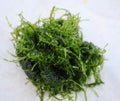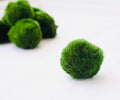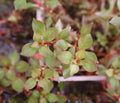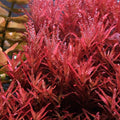8 Common Mistakes in Nurturing Aquatic Plants
Your aquarium plants are not just a beautiful add-on to your tiny waterworld, but they also play a crucial role when it comes to water purification. And those who have "black thumbs" may find it very challenging to keep the plants thriving and pretty. In this blog post, we will be sharing with you the 10 most common pitfalls that we also experienced when we were just starting aquascaping.
8 Common Mistakes in Nurturing Aquatic Plants
1. Neglecting Root Tabs for Dwarf Aquarium Lily
If you have plants like dwarf aquarium lilies that have bulbs, applying root tabs is very important. If you are seeing holes in the leaves of your lilies or noticing that they are melting, it is a sign that your plant is lacking nutrients. You can only revive the plant by adding root tabs, which will promote healthy growth.
2. Inadequate Light and Crowded Floating Plants
If you have a lily plant in your tank, insufficient light can lead to a dead plant. Make sure that floating plants don't overshadow your lilies, as it will prevent their access to light. There should be a balance in the intensity of the light for both floating plants as well as the plants at the substrate level.
3. Strong currents impact floating plants.
Floating plants like red root floaters are very sensitive to strong currents, and they are prone to melting because of the impact of the bubbles. Adjust your air pump and choose a more gentle one so that you can avoid killing the floating ones.
4. Unprotected Plants from Digging Fish
Plants like the Amazon swords need protection from fish that can dig them up. You can put up barriers or choose fish-friendly tankmates that can safeguard your rooted plants.
5. Super Gluing Anubias Rhizome
Even though aquarium glue is safe and intended for underwater use, you need to use it with caution and do not overglue. When you are attaching Anubias to the driftwood or rocks, do not cover the entire rhizome; otherwise, it will lead to the suffocation and demise of your plant.
6. Moving Cryptocoryne Plants
There are plants that are too sensitive to movement, such as Cryptocoryne plants, as they may experience damage to their fragile roots when being moved. You have to handle them delicately to avoid breakage during transfers.
7: Incorrect Lighting for Cryptocoryne
If you have a cryptocoryne in your tank, maintain a balance in your tank's lighting to prevent crypts from becoming covered in algae. This hairy algae can distract the process of photosynthesis, which will slow down the growth of the plant.
8. Potassium Deficiency in Java Fern
You may see black and brown leaves on your Java fern plant because of the lack of potassium. A well-balanced liquid fertilizer, along with a potassium supplement, can promote vibrant growth.
8 Common Mistakes in Nurturing Aquatic Plants
1. Neglecting Root Tabs for Dwarf Aquarium Lily
If you have plants like dwarf aquarium lilies that have bulbs, applying root tabs is very important. If you are seeing holes in the leaves of your lilies or noticing that they are melting, it is a sign that your plant is lacking nutrients. You can only revive the plant by adding root tabs, which will promote healthy growth.
2. Inadequate Light and Crowded Floating Plants
If you have a lily plant in your tank, insufficient light can lead to a dead plant. Make sure that floating plants don't overshadow your lilies, as it will prevent their access to light. There should be a balance in the intensity of the light for both floating plants as well as the plants at the substrate level.
3. Strong currents impact floating plants.
Floating plants like red root floaters are very sensitive to strong currents, and they are prone to melting because of the impact of the bubbles. Adjust your air pump and choose a more gentle one so that you can avoid killing the floating ones.
4. Unprotected Plants from Digging Fish
Plants like the Amazon swords need protection from fish that can dig them up. You can put up barriers or choose fish-friendly tankmates that can safeguard your rooted plants.
5. Super Gluing Anubias Rhizome
Even though aquarium glue is safe and intended for underwater use, you need to use it with caution and do not overglue. When you are attaching Anubias to the driftwood or rocks, do not cover the entire rhizome; otherwise, it will lead to the suffocation and demise of your plant.
6. Moving Cryptocoryne Plants
There are plants that are too sensitive to movement, such as Cryptocoryne plants, as they may experience damage to their fragile roots when being moved. You have to handle them delicately to avoid breakage during transfers.
7: Incorrect Lighting for Cryptocoryne
If you have a cryptocoryne in your tank, maintain a balance in your tank's lighting to prevent crypts from becoming covered in algae. This hairy algae can distract the process of photosynthesis, which will slow down the growth of the plant.
8. Potassium Deficiency in Java Fern
You may see black and brown leaves on your Java fern plant because of the lack of potassium. A well-balanced liquid fertilizer, along with a potassium supplement, can promote vibrant growth.
















